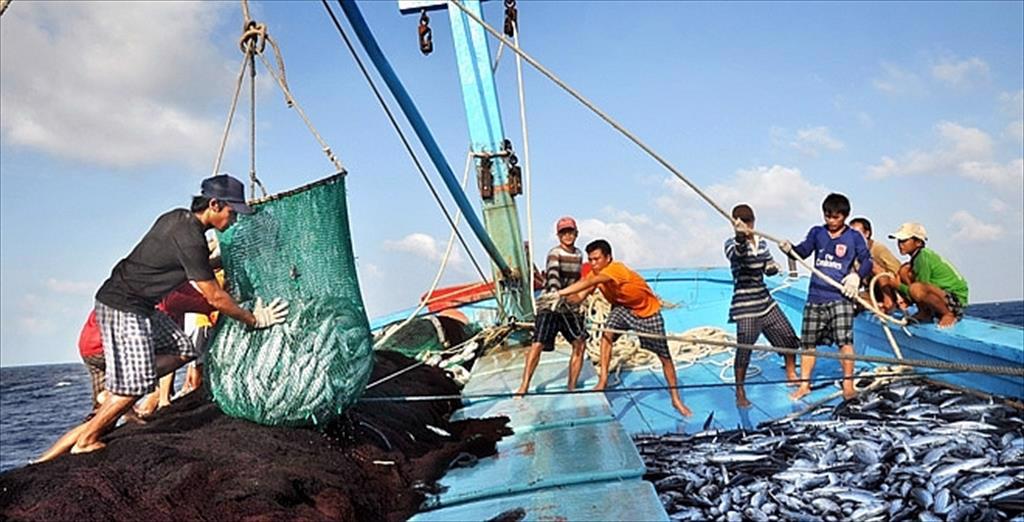(seafood.vasep.com.vn) In 2024, Vietnam's seafood sector successfully exported to numerous countries, reaching a milestone of USD 10 billion, a 12% increase compared to 2023. 2025 promises to be a prospective year for promoting exports to various markets, including target and potential markets such as the US, China, ASEAN, and the Middle East.

US economic recovery and new tariff policies present both opportunities and challenges for Vietnamese seafood
Forecasts indicate that the US economy will continue to stabilize and experience robust recovery in 2025, presenting significant opportunities for Vietnam's seafood sector. In 2024, Vietnamese seafood exports to the US recorded a 16% increase, exceeding USD 1.8 billion. Key products such as whiteleg shrimp, black tiger shrimp, pangasius, tuna, and crab all experienced positive growth.
A key factor contributing to increased seafood consumption in the US is the rapid growth of worker wages, outpacing the rise in consumer prices. This trend may lead to increased spending on food, including seafood. Furthermore, the Federal Reserve (Fed)'s potential easing of monetary policy is expected to further stimulate the US economy in 2025.
However, a significant challenge for Vietnamese seafood exports to the US stems from the new administration's trade policies, particularly the risk of international trade disruptions and port congestion due to tariff changes. These factors could significantly impact trade flows and increase shipping costs.
China: A strategic market facing heightened competitive pressure
China has consistently been a key market and holds a strategic position for Vietnam's seafood sector. China's geographical proximity offers lower logistics costs compared to other major markets. Coupled with the stable growth of the Chinese economy, this presents a strong impetus for Vietnam's seafood exports.
However, Vietnam's seafood sector faces intense competition from the Chinese domestic market, particularly as China's exports to the US may decline due to new tariff policies. Furthermore, China's increasing seafood exports to ASEAN markets, such as Malaysia, Thailand, and the Philippines, will create significant pressure on Vietnamese seafood products.
In this context, Vietnam could increase its market share in the US as China is affected by trade disputes and tariff issues. Nevertheless, competition from Chinese seafood products in international markets remains a considerable challenge.
ASEAN to spearhead global economic growth in 2025
The ASEAN region and other Asian nations are projected to lead global economic growth in 2025. Despite competition from countries such as China and India, ASEAN remains a promising market for Vietnamese seafood. However, seafood consumption in ASEAN markets could be affected by the slowdown of the middle class in Indonesia, Southeast Asia's largest economy. Simultaneously, Thailand is facing challenges in its post-pandemic economic recovery. Nevertheless, compared to markets such as the EU and Japan, ASEAN is still considered a potential destination for Vietnamese seafood exports in 2025.
The Middle East: Rising demand for seafood imports
While accounting for less than 4% of Vietnam's total seafood export turnover, the Middle East represents a highly promising market. Seafood demand in Middle Eastern countries is rapidly increasing, particularly as these nations transition from oil-dependent economies to developing non-oil industries such as tourism, technology, and food processing. Countries like the UAE, Saudi Arabia, Qatar, and Kuwait rely on seafood imports to meet domestic consumption needs. Consequently, demand for seafood imports from countries like China, India, and Vietnam is projected to continue its upward trajectory.
To capitalize on the potential of these markets, Vietnam's seafood sector needs to create incentives for farmers and fishermen to confidently engage in production, ensuring a supply of Vietnamese-origin raw materials to leverage tariff advantages. Businesses require motivation to improve product quality, enhance competitiveness, and facilitate export market access. This will pave the way for a confident resurgence in exports, potentially reaching USD 11 billion or more in 2025.